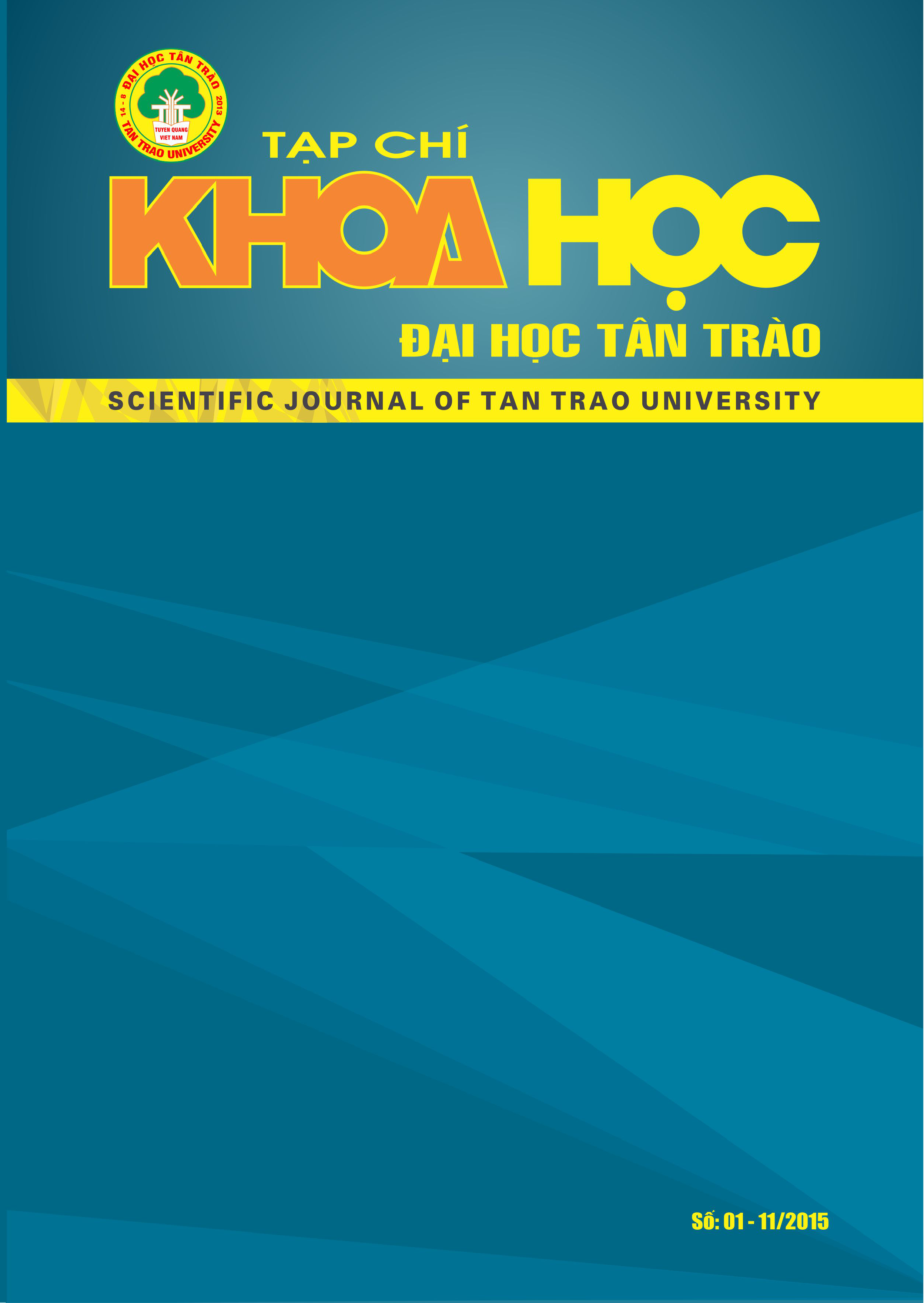MỘT SỐ BIỆN PHÁP TẠO HỨNG THÚ HỌC TẬP CHO HỌC SINH ĐỂ NÂNG CAO HIỆU QUẢ DẠY HỌC Ở TIỂU HỌC
DOI:
https://doi.org/10.51453/2354-1431/2015/55Từ khóa:
hứng thú, há»c táºp, há»c sinhTóm tắt
Hứng thú là một thuộc tính tâm lí - nhân cách quan trọng của con người. Cùng với tự giác, hứng thú làm nên tính tích cực nhận thức, giúp học sinh học tập đạt kết quả cao, có khả năng khơi dậy mạch nguồn của sự sáng tạo. Hứng thú không tự nhiên nảy sinh và khi đã nảy sinh nếu không duy trì, nuôi dưỡng cũng có thể bị mất đi. Hứng thú được hình thành, duy trì và phát triển nhờ môi trường giáo dục với vai trò dẫn dắt, hướng dẫn, tổ chức của giáo viên. Giáo viên là người có vai trò quyết định trong việc phát hiện, hình thành, bồi dưỡng hứng thú học tập cho học sinh. Bài viết này chưa đặt ra vấn đề bàn lại mục tiêu và chương trình của từng môn học. Đó là một vấn đề lớn của một công trình nghiên cứu khác. Ở đây chúng tôi chỉ bàn đến những biện pháp tạo hứng thú học tập trên một chương trình dạy học đang được thực thi.Vì vậy, thành tố mục tiêu chỉ giới hạn ở làm cho học sinh nhận thức mục tiêu, lợi ích của bài học. Cũng do khuôn khổ của bài viết, trong phần trình bày nhóm biện pháp tác động vào nội dung dạy học, chỉ tập trung minh họa ở môn Tiếng Việt và trong phần trình bày nhóm biện pháp tác động vào phương pháp dạy học, chỉ tập trung lấy dẫn chứng ở môn Toán. Những luận điểm và ý tưởng tạo hứng thú học tập cho học sinh tiểu học được đề cập ở đây không chỉ nhằm áp dụng cho hai môn học này.
Tải xuống
Tài liệu tham khảo
1. Nguyễn Bá Kim (2002), Phương pháp dạy học môn Toán, Nxb Đại học Sư phạm.
2. Nguyễn Hữu Châu - chủ biên (2004), Phương pháp, phương tiện, kĩ thuật và hình thức tổ chức dạy học trong nhà trường, Nxb Đại học Sư phạm.
3. Đỗ Đình Hoan - chủ biên, Sách giáo khoa Toán 2; 3; 4.
4. Đỗ Đình Hoan - chủ biên, Sách giáo viên Toán 2; 3; 4.
5. Wilbert J. McKeachic, Những thủ thuật trong dạy học; tái bản lần thứ 2/2003. Bản quyền của College Permissions Houghton Miflin company.
6. Trần Ngọc Lan, "Một số thủ thuật thường dùng để đề xuất các bài toán cho học sinh tiểu học”; Tạp chí Giáo dục, số 31, 2/2002.
7. Trần Ngọc Lan, "Sử dụng kĩ thuật đặt câu hỏi trong dạy học Toán ở tiểu học nhằm tích cực hóa hoạt động học tập của học sinh", Tạp chí Giáo dục, số145, 9/2006.
8. Vũ Thị Lan (2008), “Các biện pháp tạo hứng thú học tập cho học sinh nhằm nâng cao hiệu quả dạy học Tiếng Việt ở tiểu học”, Luận án tiến sĩ.
9. Nguyễn Thị Thanh Nhài - Lê Phương Nga, “Một số biện pháp tạo hứng thú cho học sinh lớp 1 để nâng cao hiệu quả học tập trong giờ học Tiếng Việt”, Tập san Giáo dục Tiểu học, Số 2/2012.
10. Lê Phương Nga, “Bảo đảm sự thành công của học sinh trong giờ học Tiếng Việt những ngày đầu đến trường”; Tạp chí Tâm lí học, Số 2/2004.
Tải xuống
Đã Xuất bản
Cách trích dẫn
Số
Chuyên mục
Giấy phép

Tác phẩm này được cấp phép theo Giấy phép Quốc tế Creative Commons Attribution-ShareAlike 4.0 .
Bài báo được xuất bản ở Tạp chí Khoa học Đại học Tân Trào được cấp phép theo giấy phép Ghi công - Chia sẻ tương tự 4.0 Quốc tế (CC BY-SA). Theo đó, các tác giả khác có thể sao chép, chuyển đổi hay phân phối lại các bài báo này với mục đích hợp pháp trên mọi phương tiện, với điều kiện họ trích dẫn tác giả, Tạp chí Khoa học Đại học Tân Trào và đường link đến bản quyền; nêu rõ các thay đổi đã thực hiện và các nghiên cứu đăng lại được tiến hành theo cùng một bản quyền.
Bản quyền bài báo thuộc về các tác giả, không hạn chế số lượng. Tạp chí Khoa học Tân Trào được cấp giấy phép không độc quyền để xuất bản bài báo với tư cách nhà xuất bản nguồn, kèm theo quyền thương mại để in các bài báo cung cấp cho các thư viện và cá nhân.
Mặc dù các điều khoản của giấy phép CC BY-SA không dành cho các tác giả (với tư cách là người giữ bản quyền của bài báo, họ không bị hạn chế về quyền hạn), khi gửi bài tới Tạp chí Khoa học Đại học Tân Trào, tác giả cần đáp ứng quyền của độc giả, và cần cấp quyền cho bên thứ 3 sử dụng bài báo của họ trong phạm vi của giấy phép.






